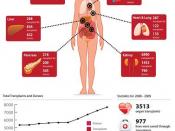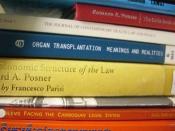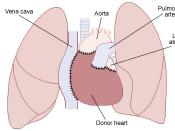Heart disease, also known as the "silent killer", is one of the most common causes of death worldwide, though many people live with this disease for many years without knowing it. Types of heart diseases include coronary artery disease, cardiomyopath, valvular heart disease, pericardial disease, and congenital heart disease. The most common type of heart disease is coronary artery disease.
Coronary artery disease (CAD) is when the arteries that supply blood for the heart muscle gradually hardens and thickens (artherosclorosis) because of the buildup from salt, fat, cholesterol and other substances (plaque) on their inner walls. This process leaves the heart with a lack of oxygen and blood, forcing it to work harder (high blood pressure/hypertension). As the heart continues to do this, the wall of the arteries weakens and becomes very fragile. At this stage, one of the arteries may rupture and form a blood clot that clogs up in the artery and block the pathways for blood to flow through to the heart muscle, resulting to a heart attack.
Causes of CAD include smoking, stress, obesity, lack of exercise and having an unhealthy diet that involves too much sodium, fat and cholesterol. These are things people can change in their every day life to prevent CAD, or slower the process if it has already started, but having a family history of heart disease is something people cannot change to prevent themselves from the disease.
Symptoms may occur if a person is found to have coronary artery disease, including nausea, shortness of breath, vomiting, heavy sweating or angina, which is a pain usually around the back, chest, arm, or neck. The pain usually lasts from 1-20 minutes and is consistent but not severe.
Using medications such as cholesterol lowering drugs, Aspirin, Beta-blockers, Nitroglycerin, Calcium channel blockers,


